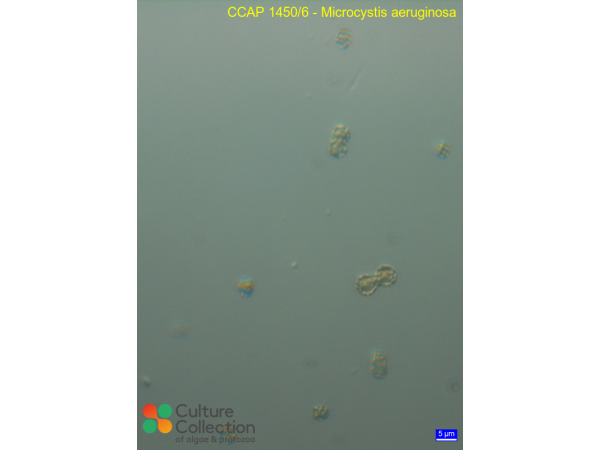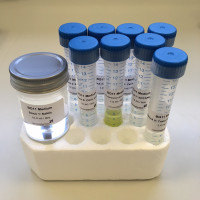(Bold text = submission by CCAP staff or collaborators)
Note: for strains where we have DNA barcodes we can be reasonably confident of identity, however for those not yet sequenced we rely on morphology
and the original identification, usually made by the depositor. Although CCAP makes every effort to ensure the correct taxonomic identity of strains, we cannot guarantee
that a strain is correctly identified at the species, genus or class levels. On this basis users are responsible for confirming the identity of the strain(s) they receive
from us on arrival before starting experiments.
For strain taxonomy we generally use AlgaeBase for algae and
Adl et al. (2019) for protists.
| Attributes | |
| Authority | Kützing emend. Elenkin 1924 |
| Isolator | Zehnder (1954) |
| Collection Site | Little Rideau Lake, Ontario, Canada |
| Notes | unicellular; reinstated 1992 from UTEX; produced toxin 'microcystin'; LC-MS analysis by RGU in 2021 for cylindrospermopsins, microcystins and anatoxins: detected microcystins LR, HilR, YR. |
| Axenicity Status | Bacteria and other organisms present |
| Area | North America |
| Country | Canada |
| Environment | Freshwater |
| GMO | No |
| Group | Cyanobacteria |
| Original Designation | NRC-1 |
| Pathogen | Not pathogenic: Hazard Class 1 |
| Strain Maintenance Sheet | SM_FreshwaterCyanobacteria.pdf |
| Toxin Producer | Toxic |
| Type Culture | No |
| Taxonomy WoRMS ID | 146558 |
| Equivalent Strains | UTEX 2385 |
CCAP 1450/6
Microcystis aeruginosa
- Product Code: CCAP 1450/6
- Availability: See Availability/Lead Times
Related Products
CCAP FABG-C
BG11 Medium
CONCENTRATED STOCKS
Non-sterile concentrated stocks to make up 5 litres of BG11 medium. BG11 Medium is used for culturi





